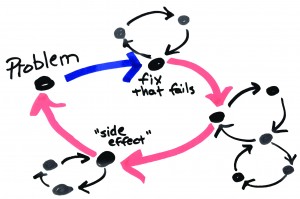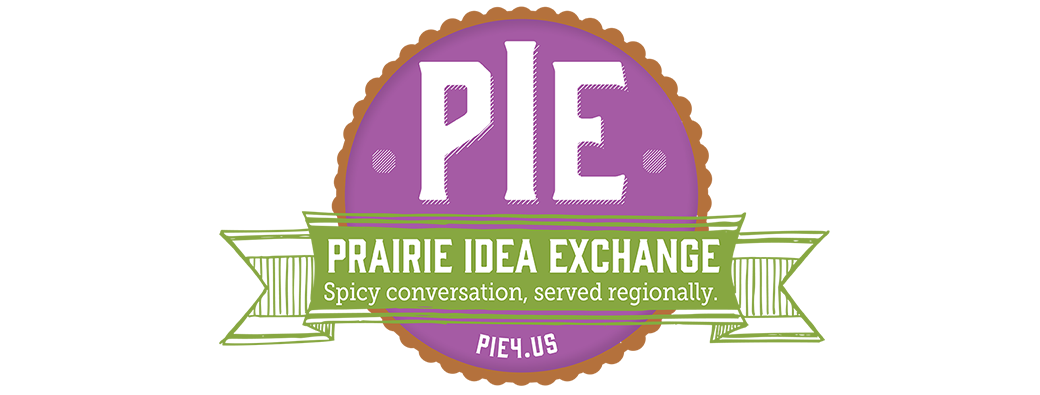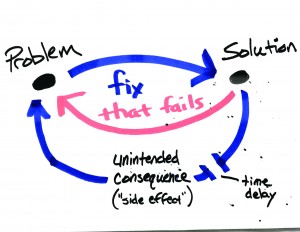by Joe Bartmann
A very experienced systems-thinking friend of mine once shared an idea that totally changed my worldview about how things work: “Every system is designed perfectly to create what it creates.”
 1. Whatever the system is doing or creating, it’s doing or creating that because that is exactly what it is designed to do, whether we intended it that way or not. That helped me to understand that solving problems in any system is about figuring out how to tweak the design of the system in the right way.
1. Whatever the system is doing or creating, it’s doing or creating that because that is exactly what it is designed to do, whether we intended it that way or not. That helped me to understand that solving problems in any system is about figuring out how to tweak the design of the system in the right way.
It’s about understanding the cause-effect relationships that drive the behavior of people and organizations within that system.
 2. Those relationships can be imagined as a bunch of loops that point to each other. And each spot on the loop can both cause change and be affected by changes in the rest of the system.
2. Those relationships can be imagined as a bunch of loops that point to each other. And each spot on the loop can both cause change and be affected by changes in the rest of the system.
The more complex the relationships, the harder it is to predict the outcomes in the system.
 3. So when we bump into fixes that fail—or backfire—on us, it’s so important to step back and ask why it happened that way.
3. So when we bump into fixes that fail—or backfire—on us, it’s so important to step back and ask why it happened that way.
And, when I say to ask “why,” what I really mean is to ask “how”: How is it that what we want to happen isn’t already happening? How is the structure of this system driving behavior and outcomes in a different direction than we want it to?
4. Unintended consequences that people often call “side effects” emerge over time. We lose track of the feedback and behavior that creates them, and rarely recognize that our so-called solution actually backfired on us.
5. Whenever something happens tha t we didn’t expect to happen, we call it a “side effect” or “defect” in the system, and point fingers at other parts of the system. But if we look at the system from the point of view of my systems-thinking friend, there is no such thing as a “side effect.”
t we didn’t expect to happen, we call it a “side effect” or “defect” in the system, and point fingers at other parts of the system. But if we look at the system from the point of view of my systems-thinking friend, there is no such thing as a “side effect.”
We just didn’t see that unintended consequence coming because we did not take into account a lot of circular relationships, and because the time delays between what we do and that side effect often help us forget that we caused the backfire in the first place.
 6. What happens in a system is a result of its “feedback loops”—all those hard-to-see relationships that feed back into the problem we are trying to solve.
6. What happens in a system is a result of its “feedback loops”—all those hard-to-see relationships that feed back into the problem we are trying to solve.
When we are trying to improve any system in our rural communities (housing, tourism, economic development, etc.), it helps to understand, first, that there is always more to the problem than what can be seen on the surface; and second, that better solutions come from a deeper understanding of how the different parts of the system are related.
 Dakotafire Get your spark here.
Dakotafire Get your spark here.




